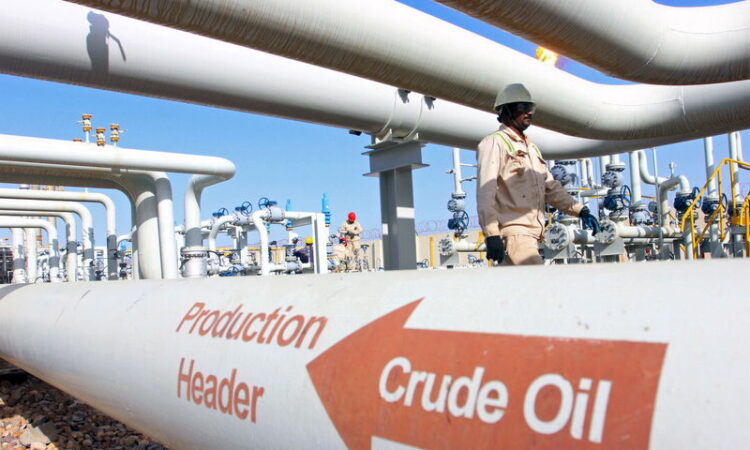
By Arathy Somasekhar
(Reuters) – Oil prices inched higher on Wednesday after industry data showed an unexpected rise in U.S. crude stocks, signalling weak demand to markets already worried about recession and disappointing Chinese economic data.
Brent crude futures eased 27 cents, or 0.4%, to $74.01 a barrel by 0019 GMT. U.S. West Texas Intermediate (WTI) crude was at $69.13 a barrel, down 29 cents, or 0.4%.
Both benchmarks climbed over 3% on Tuesday on hopes of rising fuel demand after China’s central bank lowered a short-term lending rate. Prices fell by 4% on Monday on concerns about the Chinese economy after disappointing economic data last week.
U.S. crude oil stocks rose by about 1 million barrels in the week ended June 9, according to market sources citing American Petroleum Institute figures on Tuesday, contrary to the average estimate for a 510,000 million barrel decline according to analysts polled by Reuters. [API/S]
Government data on stockpiles is due later in the day.
Market participants were also closely watching a Federal Reserve meeting, which has no pre-determined interest rate hike on the table. Rate hikes strengthen the dollar, making commodities denominated in the U.S. currency more expensive for holders of other currencies and weighing on prices.
With still-too-hot inflation riding their heels but abundant uncertainty about both the economic outlook and the lagged effects of 10 rate hikes since March 2022, a breather from increases looks to be in the cards when the rate-setting Federal Open Market Committee meeting concludes Wednesday.
Economists expects the Bank of Canada to raise interest rates again in July to 5.00% after a surprise 25 basis point increase last week.
The European Central Bank is also expected to hike interest rates by another quarter percentage point on Thursday to tame stubborn inflation. But the Bank of Japan, which will announce its plan on Friday, is expected to maintain its ultra-loose policy.
Meanwhile, OPEC+ has granted Russia a slightly higher oil production baseline, meaning Russia can produce more under the latest quotas than previously agreed.
Get The News You Want
Read market moving news with a personalized feed of stocks you care about.
Get The App






